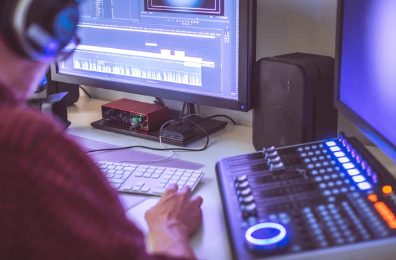How To Show/Hide Specific Panels in the After Effects Workspace?
After Effects provides a vast array of panels to streamline your motion graphics and visual effects workflow. But with so many panels at your disposal, the workspace can become cluttered, hindering your creative flow. This article equips you with the knowledge to effectively show and hide specific panels in After Effects, allowing you to customize your workspace for maximum efficiency.
Understanding Panel Management
After Effects offers a flexible workspace that allows you to personalize the layout and visibility of panels. These panels house various functionalities, from essential tools like the Timeline and Layers panel to more specialized panels for effects, text editing, and project management.
Benefits of Panel Management:
- Improved Focus: By hiding unused panels, you can declutter your workspace and focus on the tools you're currently using. This reduces visual distractions and enhances your creative concentration.
- Increased Efficiency: A well-organized workspace allows you to quickly access the panels you need most often, streamlining your workflow and saving valuable time searching for tools.
- Customization for Different Tasks: Depending on the project stage (editing, animation, color correction), you might prioritize different panels. Showing and hiding panels allows you to tailor your workspace for specific tasks.
Methods for Showing and Hiding Panels
There are several ways to show and hide panels in After Effects:
Method 1: Using the Window Menu
- Navigate to the Window Menu: Locate the "Window" menu at the top of the After Effects interface.
- Panel Options: The "Window" menu lists all available panels in After Effects. Each panel has a checkbox next to its name.
- Show/Hide Panels: Click the checkbox next to a panel's name to toggle its visibility. A checked checkbox indicates the panel is visible, while an unchecked checkbox signifies it's hidden.
Method 2: Using Panel Tabs
- Locate Panel Tabs: Look for the thin horizontal or vertical tabs along the edges of your After Effects workspace. These tabs represent currently visible panels.
- Click and Drag: Click and hold on a panel's tab, then drag it away from the docked area. This detaches the panel and creates a floating window.
- Docking and Hiding: Drag the detached panel back to one of the edges of the workspace to dock it again. Alternatively, right-click on a panel tab and select "Close" to completely hide the panel.
Method 3: Using Keyboard Shortcuts
- Memorize Shortcuts (Optional): After Effects offers keyboard shortcuts for showing and hiding specific panels. These shortcuts can significantly enhance your workflow efficiency by allowing quick access without navigating menus. You can find a list of keyboard shortcuts in the After Effects documentation or by navigating to Help > After Effects Help (Windows) or Help > After Effects (Mac) and searching for "keyboard shortcuts".
- Activate Shortcuts: Once you've learned the relevant shortcuts, press the appropriate key combinations to show or hide specific panels.
Additional Considerations and Tips:
- Workspace Layouts: After Effects allows you to save custom workspace layouts. This lets you create different configurations with specific panels visible for various tasks like animation, compositing, or color grading. You can then quickly switch between these layouts using the "Window > Workspaces" menu.
- Panel Groups: Consider grouping related panels together. This helps maintain organization and keeps frequently used tools within easy reach. You can drag and drop panels next to each other to create groups.
- Reset Workspace (Optional): If your workspace becomes overly cluttered or disorganized, you can reset it to the default layout by navigating to Window > Workspaces > Reset Workspace.
Conclusion
By mastering the art of showing and hiding panels in After Effects, you can create a personalized and efficient workspace that caters to your specific needs and creative workflow. Remember, a well-organized workspace is key to maximizing your productivity and unlocking your creative potential within After Effects. So, experiment, customize, and take control of your workspace for a smoother and more enjoyable creative journey!



